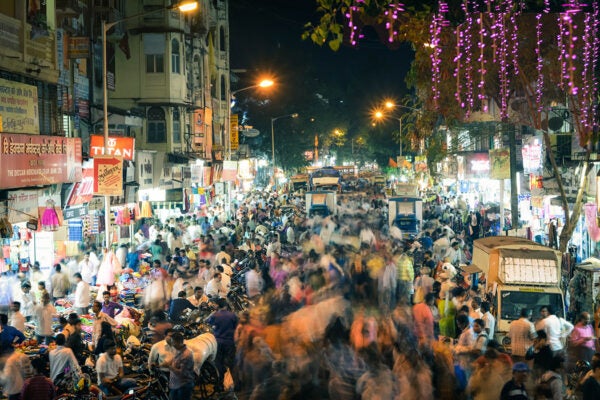Travel, specifically the touristic kind, has been colored bloody, ignorant, and invasive by imperialism. Even in more “developed,” anglicized parts of the world, it continues to threaten lifestyles, traditions, ecology, access to resources, and general peace of mind. Travel writing, historically, has followed suit in expressing everything from performative adoration and exoticization to sheer racism and erasure. But at its best it can offer a sobering portrait of human folly, bias, humiliation, and desire for connection—those endlessly conflicted feelings that come with the experience.
Travel writing differs from ethnography because it’s not scientific nor does it purport to capture the “authenticity” of a place and its inhabitants. It’s not quite reportage or tourism guidebook either, since it’s not always enthusiastic or observant or beholden to fact. This literary subgenre has arguably been around since the dawn of written material but didn’t emerge as a distinct sector of scholarship and pedagogy until roughly the 1980s. Remaining contested as a classifiable writing mode, it straddles the boundaries of personal essay, memoir, journalism, cultural criticism, food writing, nature writing, and more dominant umbrellas like fiction and poetry. All that said and done, it would be remiss to claim that this reading list is comprehensive or authoritative; even for a writing scholar and critic who regularly teaches travel writing at the college level, the subgenre and its accompanying breadth of scholarship eludes definitive contours. Simply put, it has its tendrils in too many places.
Instead, here’s a list of some exciting work that this corner of research has to offer, from analyzing primary sources, to theorizing the treatment of non-human entities in one’s worldview, to guided tourism and “ruin porn,” to confrontational screeds and immersion manuals.
Jamaica Kincaid, A Small Place (Farrar, Straus and Giroux, 1988).
Controversial to this day, Kincaid’s book-length essay operates both as a vibrant piece of travel writing and a penetrating manifesto against tourism. Complex, abrasive, yet breezy, propelled along by its regional specificity and narrative ambitions, but deceptively didactic—it’s a rare case of a text being a primary example of travel writing as much as a secondary source for analyzing it.
Adopting second-person perspective as a weapon of irony, she sets the tone by addressing us directly, in most sentences implicating the reader as a privileged tourist who constructs Antigua in their own glorified view while simultaneously undercutting it with the civic strife and harsh economic realities faced by locals. The following passage, a couple of paragraphs in, offers a perfect example:
You disembark from your plane. You go through customs. Since you are a tourist, a North American or European—to be frank, white—and not an Antiguan black returning to Antigua from Europe or North America with cardboard boxes of much needed cheap clothes and food for relatives, you move through customs swiftly, you move through customs with ease. Your bags are not searched. You emerge from customs into the hot, clean air: immediately you feel cleansed, immediately you feel blessed (which is to say special); you feel free.
Dervla Murphy, “Foot Notes: Reflections on Travel Writing,” The Wilson Quarterly 16, no. 3 (1992): 122–129.
This survey of travel writing is interesting to reevaluate in light of so many recent sources that conflate tourism with traveling. Murphy, in one notable section, laments,
Tourism is intrinsically incompatible with travelling. The traveller’s rewards are natural beauty—and silence, space, solitude—and also, no less importantly, spontaneous human-to-human contact with the locals, free of exploitation by either side. The traveller merges temporarily with a region and its people, as tourists cannot do.
Is it really a conflation, though? It’s a bit of a generalization to claim that traveling as an activity affords no exploitative intent—what’s more, writing literarily about that activity denotes an added layer of subjectivity. Implicit exploitation, othering, or sensationalism is not a stretch, even if the travel writer in question thinks they have noble motivations. Further, it becomes less believable in the present day to separate tourism (something Murphy considers destructive) from traveling (which she deems “rewarding” and “hard-won”), especially when climate change is exacerbated by the mere fact of too many people seeking out a destination, as with Hawaiʻi.
Nevertheless, these contradictions make a great case for this text’s inclusion; for one, it raises questions as to how the distinction between tourism and travel has narrowed, or otherwise changed, over time. How has that line been tested, crossed, or examined in travel writing through the decades? A particularly luminous observation by Murphy, which hasn’t been compromised with time, posts that “[a]ll writers are egocentric, but good travel writers spontaneously become less so during their journeys.”
Mary Louise Pratt, Imperial Eyes: Travel Writing and Transculturation (Routledge, 1992).
Pratt’s defining text expands the vocabulary of travel writing, introducing key terms like transculturation, contact zones, and anti-conquest. Her main concern is with the interactive (sometimes dynamic, more often exploitative) encounters between “dominant metropolitan culture” and those who reside in its periphery. Imperial Eyes conceptualizes the subgenre quite a bit, but it grounds itself in concrete examples throughout. Pratt “rounds out” her initial thoughts in the second edition of the book (2007) in a new chapter, “Modernity, mobility, globality,” the first of part which is concerned with
esthetics and colonialism in twentieth-century modernisms, focusing on some writers of the 1920s–40s in Spanish America and Brazil. The second part reflects on mobility in the present phase of neoliberal globalization…with new patterns of mobility, such as reverse diasporas from ex-colonies to the metropole, and new recyclings of the archives of travel.
The writings surveyed here by Pratt offer an ever-in-flux chronology of how marginalized cultures have been “invisibilized,” reappraised, empowered, and subjugated again, over and over, by travel writers through the years—from pre-colonial to the contemporary. Yet again, tourism and travel blur together as a result of rigorous, critical study.
Paul Zumthor, “The Medieval Travel Narrative,” trans. Catherine Peebles New Literary History 25, no. 4 (1994): 809–824.
What if we think back to the Medieval period’s travel literature and find just as complicated a dichotomy as Murphy’s? Zumthor maps the various characteristics, regional impressions, and authorial dictions of narratives produced at the time, including those by
America’s first discoverers … [who] had a tendency to allegorize sights in order to extract a meaning from them—violently, in the same way they would soon demand the extraction of gold. From the abundance of the real, they selected elements suitable to a given moralization; the rest mattered little.
The act of traveling, or “discovery” in the cases of these early explorers, becomes one of subjugation both physically and aesthetically. By merely observing their new surroundings, these cultural outsiders impose a romanticized lens upon a new world. But, as is typical for any study into travel writing, these darker findings give way to more generative ones when the authors mark this early period as the origin of travel and literature merging into a single entity. The distinction between “travel narrative and novel” was no longer sharp by the seventeenth century, when “the former was increasingly invested with a theme.”
Philip Krummrich, “Dreaming, Going, Writing: A Three-Part Course on Travel Writing,” CEA Critic 64, no. 1 (2001): 21–24.
An honors seminar curriculum of sorts, this piece is an essential artifact for understanding the pedagogy of travel writing. The course goals grapple with elements of this subgenre that begin to emerge in the aforementioned sources: voice, style, “cultural bias,” narrative, the promising interdisciplinarity of travel writing, and its ability to enlighten us on the crosshairs and overlap between fields of study.
The greatest point of pedagogical interest here is how, in addition to research, history, style emulation, and memory and observation exercises, this course aims to culminate in a field trip to Ireland. Students would be prompted to connect the theory and tradition of travel writing with its praxis in an immediate, all-consuming sense.
Binyavanga Wainain, “How to Write About Africa,” Granta 92 (2005).
Taking a hint from Kincaid, Wainain’s “how-to” piece satirizes widely stereotyped portraits of continent as expressed through Western popular culture, like “a night club called Tropicana, where mercenaries, evil nouveau riche Africans and prostitutes and guerillas and expats hang out.” If you’re a travel writer of this breed, Wainain writes, “Your hero is you (if reportage), or a beautiful, tragic international celebrity/aristocrat who now cares for animals (if fiction).” This searing manual deconstructs the subgenre and the process that goes into contributing to it, bringing the study thereof into a whole new era of experimentation and boundary dissolution.
Robin Hemley, “Travel Writing,” in A Field Guide for Immersion Writing: Memoir, Journalism, and Travel (University of Georgia Press, 2012).
A laid-back yet critical handbook, Hemley’s field guide offers concrete evidence and practical advice for those who wish to try their hand at immersive travel writing, arguing that at its most interactive, the writing engages us “precisely because [the writer] admits his subjectivity.” Hemley gives the cold shoulder to travel writing done in an encyclopedic or listicle fashion, opting instead to plunge headfirst into the ethically murky waters of “infiltrating” a place and its culture.
It’s an autodidactic source, not necessarily geared towards classroom pedagogy or scholarship, but rather a primer for the prospectively curious and emerging writers alike. Distinct features of this text include writing prompts with generative scenarios for travel (even in regard to historical and paranormal mysteries with regional specificity), anecdotes of how the author has handled travel writing while on assignment, industry knowledge like writing “on spec” and blogging, and “reenactments” of daunting voyages.
Vanessa Watts, “Indigenous place-thought & agency amongst humans and non-humans (First Woman and Sky Woman go on a European world tour!),” Decolonization: Indigeneity, Education, & Society 2, no. 1 (2013): 20–34.
Watts outlines a philosophical argument for considering Indigenous theory in a more tangible and less mythologized manner. Using her own identity as an Anishnaabe and Haudenosaunee woman, for example, she asserts that
our cosmological frameworks are not an abstraction but rather a literal and animate extension of Sky Woman’s and First Woman’s thoughts; it is impossible to separate theory from praxis…. So it is not that Indigenous peoples do not theorize, but that these complex theories are not distinct from place.
For Watts, a productive way to challenge “non-Indigenous thinkers to re-imagine their world” is to consider Euro-Christian strategies where the human is centered and nature pushed to the periphery, which reflects the “measure of colonial interaction with land…[which] has historically been one of violence and bordered individuations where land is to be accessed, not learned from or a part of.”
Approaching this source with a travel-writing mentality, it might serve a theoretical function for eschewing the traditions of, say, Victorian travel narratives and other texts replete with exoticization, otherization, and so on. Watts’s text flips them on their head, identifying how one can approach (or write of) any foreign encounter with a respect for the inanimate and non-human—and thus the ability for Indigenous communities to think this way—that defies the “epistemological-ontological divide” and renders “our communication and obligations with other beings of creation” uninterruptable. Solid footing for revisiting travel documents of yore and bringing new ones into being, not to mention thinking this way while actually traveling.
Charles Forsdick, “Dark Tourism,” Keywords for Travel Writing Studies: A Critical Glossary (Anthem Press, 2019).
This chapter breaks new ground in its surveying dark tourism and how it factors into travel writing. While it’s “arguable that travel writing described dark tourist practices long before the phenomenon was identified with this term,” dark tourism is still relatively fresh as far as literary exploration goes. From the immediate aftermath of the battle of Waterloo as an attraction, to travelers visiting psychiatric institutions in the nineteenth century, to “Auschwitz selfies” and sites of genocide, Forsdick considers the contradictory possibilities of travel writing on dark tourism in recent years. Is it doomed to the same insensitivity that its subject is criticized for, or can it foster empathy, be a creative intervention, and “encourage readers to make sense of atrocity?”
Phillip P. Marzluff, “Contemporary Travel Writing about Mongolia: Imaginative Geographies and Cosmopolitan Visions,” in Travel Writing in Mongolia and Northern China, 1860-2020 (Amsterdam University Press, 2023), pp. 139–160.
This source, perhaps the most specific of this list, pushes further against the idea of tourism and travel being distinct, particularly when the traveler perpetuates a stale, white-savior trope through their writing. Taking Mongolia as a case study, Marzluff amasses pointed critiques of travelogues set in the Asian country, which may, among other injustices, situate the traveler as a “hero” or “explorer,” impose an ahistorical identity onto the people and places they recount, or display a “‘cosmopolitan privilege’…to travel freely yet desire that non-Europeans remain unchanged by globalism and time.”
Weekly Newsletter
To frame his study of “colonial logic” in travel texts, Marzluff starts the piece by discussing a documentary series, The Misadventures of Romesh Ranganathan, and “the importance of visual images in representing non-European cultures to Western audiences.” He considers this a rare source that flirts with the positive potential of contemporary multimedia culture in contrast to the fraught traditions of written travel.
Henry Wismayer, “Nice View. Shame About All the Tourists.” Noema (January 9, 2024).
To bring us directly into the here and now, this final reading is a critical essay on the “Faustian bargain” of tourism that provides plenty of fodder for analyses of post-quarantine travel writing. Wismayer addresses issues such as the rise of artificial intelligence and virtual reality, the paradox of which lies in their ability to simulate travel without requiring tourists to mobilize. This would at once drastically reduce carbon footprints and deculturate the act of travel. With representation indistinguishable from reality, “our most prized natural and cultural treasures…would simply atrophy.” Yet again, and most conflictedly, the oscillation between shallow tourist and pensive traveler is explored, with Wismayer determining that “[t]ravel was better when there were fewer people doing it, but saying so out loud is nothing but snobbery.”
Contradictions abound in this hybrid piece that blends travel writing, literary criticism, reportage, and analysis. Tourism and travel, however you’d like to conflate the two or isolate them as separate moral entities, have a complicated history and an even more complicated future. Wismayer’s skeptical curiosity articulates the reality of this discipline in sum: travel, and its corpus, has and always will be ethically compromised and at the vanguard of our most pressing sociopolitical issues. That’s exactly why it deserves a committed intelligentsia.







